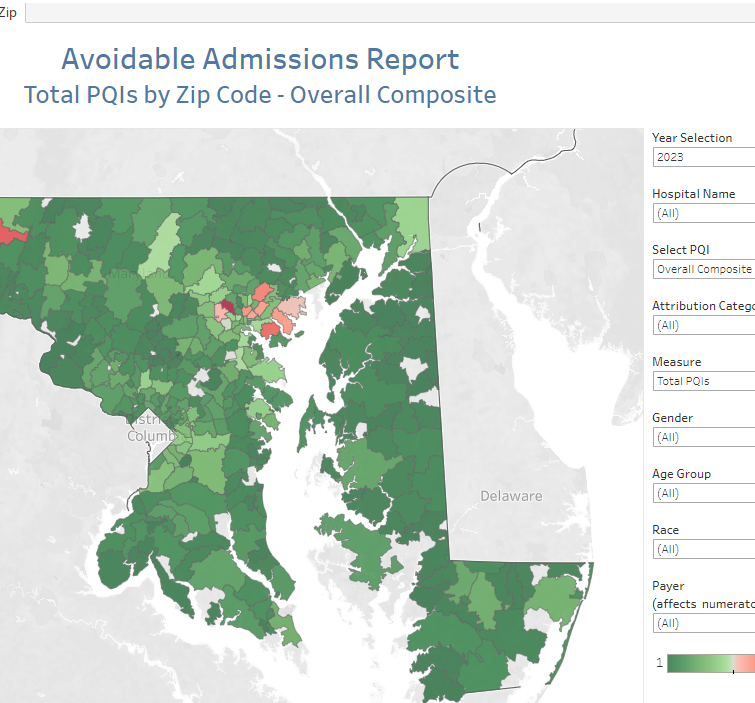Potentially Avoidable Utilization (PAU)
Reports built for users to understand hospital performance under the HSCRC’s Potentially Avoidable Utilization (PAU) Program
Join Us for the CRISP User Summit – May 13th; Register today!
Reports built for users to understand hospital performance under the HSCRC’s Potentially Avoidable Utilization (PAU) Program

The PAU policy prospectively reduces Global Budget Revenues (GBRs) in anticipation of reductions in avoidable utilization. Potentially avoidable utilization is measured within the PAU policy through Sending Readmissions, Prevention Quality Indications (PQIs), and Pediatric Quality Indicators (PDIs). PQIs and PDIs are admissions for ambulatory care sensitive admissions that may be preventable with effective primary care and population health. In prior years, PQIs were attributed to the hospital where the visit occurred. The logic was changed in 2019 and PQIs and PDIs were assigned to hospitals based on the MPA attribution for their Medicare population and on a geographic attribution for non-Medicare patients. Since 2021, the attribution logic was changed to assign PQIs and PDIs on a geographic attribution only. Under this approach beneficiaries and their costs are assigned to hospitals based on their residency. The following section describes how the PQIs are identified and assigned to hospitals.
The Health Services Cost Review Commission (HSCRC) writes the Potentially Avoidable Utilization (PAU) Savings policy and methodology behind these reports, which CRISP hosts on the CRS portal on the HSCRC’s behalf. More information on the policy and methodology can be found on the HSCRC Website.
The CRISP Reporting Services Portal hosts a few types of reports built for users to understand hospital performance under the HSCRC’s Potentially Avoidable Utilization (PAU) Program.
Below is a brief description of each type:
Subscribe